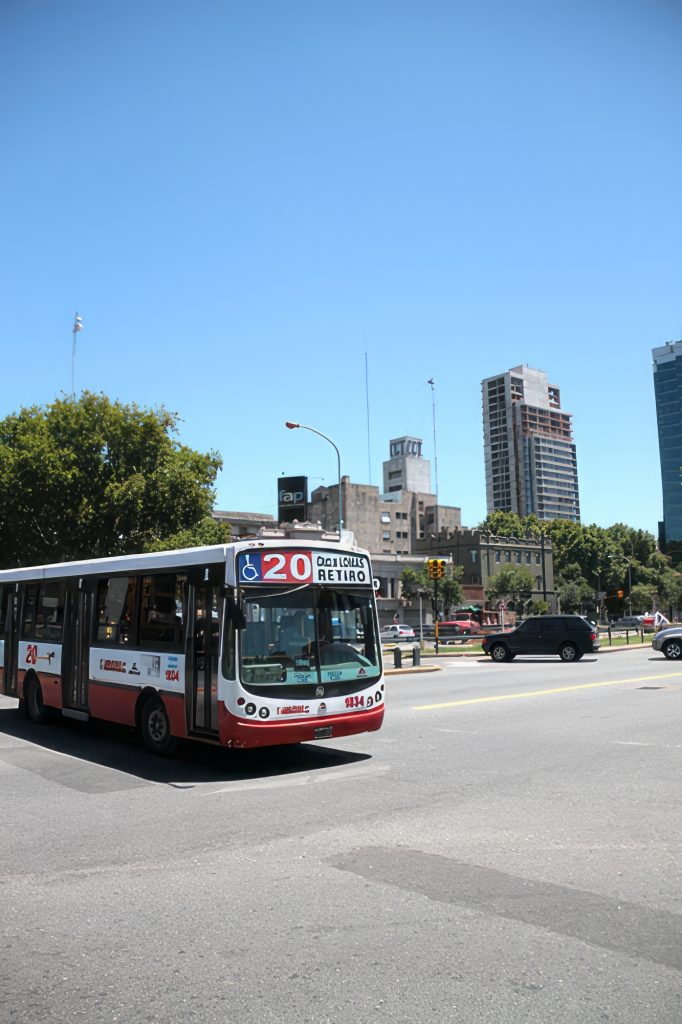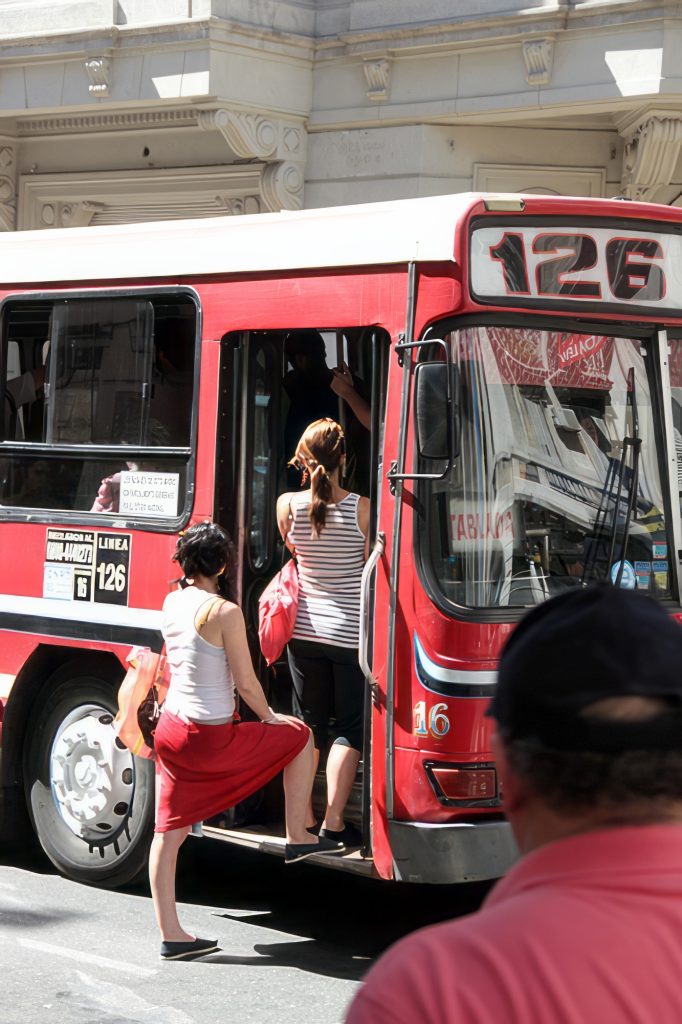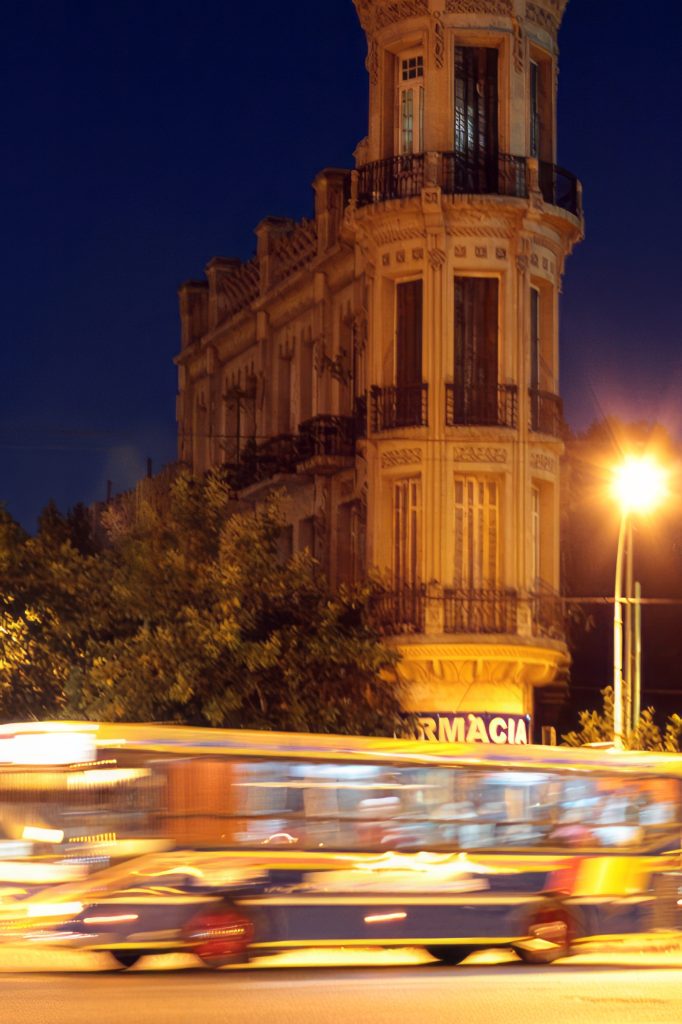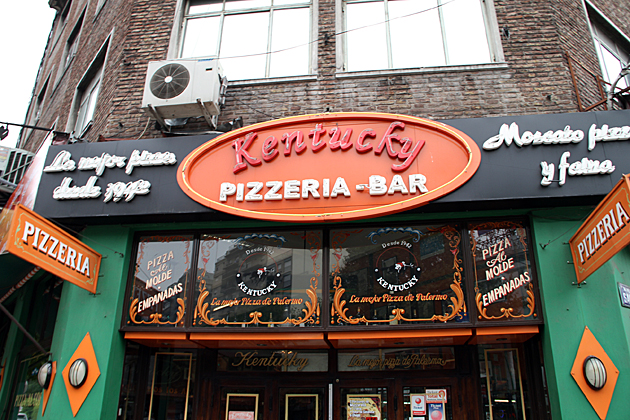Riding the Bus
After watching a few barrel at breakneck speed down San Telmo‘s tiny cobblestone streets, more inclined to use their horns than breaks when approaching an intersection, we concluded that buses must be the fastest way to get around Buenos Aires. And funnest.

The BA bus system is incredible, intimidating and comprehensive. Regardless of where you are or where you’re going, there’s usually a bus that will deliver you directly at your destination. Over 300 lines weave through the city, all operated by private companies (Bus #29 is run by Pedro de Mendoza C.I.S.A, for example). You’d think a citywide bus system would require central planning, but the privatization works here. The colectivos, as buses are known here, run frequently and even if you’ve just missed the #152, chances are another is right behind it.

Before hopping on your first colectivo, it’s worth your time to get a crash course from a local: the drivers are not patient, and would rather kick you off than answer questions. The Guia “T” is indispensable. A guide that details every bus in the city, it provides charts and maps to help you figure out which number you should take. The Guia T is the Bible of Buenos Aires. Study it. Worship it.
Basically, it goes like this: you’ve done your research in the Guia T, and know that #93 will you take you to the Recoleta Cemetery. Find the bus stop, and keep an eagle eye out for a #93 racing recklessly down the street. Wave it down as early as possible. The bus should stop, but I’ve seen them simply slow down and open the doors. Either way, as soon as those doors open, jump inside. Hesitate for just a second, and the bus will be on its way without you.

Once you’re on the bus, you tell the driver exactly where you’re going (an intersection is best), then pay the indicated fare. Right now, a full fare is about $1.25 and you pay the machine with coins, which can be difficult to find in the capital. In fact, the most troublesome part of taking the bus is scrounging up enough change; vendors are reluctant to give their monedas away. I’ve had people give me a $2 bill rather than a $1 coin, more willing to lose profit than relinquish their precious metal.
Once you’re on the bus, hurtling down BA’s busy streets and watching the buildings pass by, the stress was worth it. In the short time we’ve been here, it’s been a lot of fun — getting familiar with “our” lines, learning to jealously horde our change, and consulting the Guia “T” as we stare wide-eyed and happily out the window, on our way to whatever adventure the day holds in store. I bet by the end of our three months here, we’ll have joined the ranks of weary and wise passengers, silently heaping scorn upon happy foreigners like our current selves, so ridiculously proud of themselves for a thing like riding the bus.
Well screw you, Future Us! Stop trying to ruin our fun.




jajaja! You make it look like a dangerous thing to do! XD
If you think they go fast in everyday trip, you definitely didn’t get a bus at like… 2 am! They really fly!
But I guess it’s better for the hurry porteño!
And yes, Guia T is the Bible even to porteños…
And coins… there was a time (like 4 years ago) coins were missing and everyone was sooo money-grubber and it was a crazy time.. now people save their coins as gold, but it’s easier to get them…aaaand there’s this card SUBE or the other MONEDERO (it’s sell in subways and some kioscos) I don’t know wich buses have the card system on, but you can charge the cards with money and use it instead of the imposible coins 🙂
Na – not dangerous but we haven’t lived in a huge city like Buenos Aires like ever (except for when we lived in Berlin for 5 years)it’s just different. We love the buses here and we are so glad that our Landlord explained us the Guia T on the first day.
We have seen those cars but the readers are like 50 % broken. We rather got monedero hunting 🙂